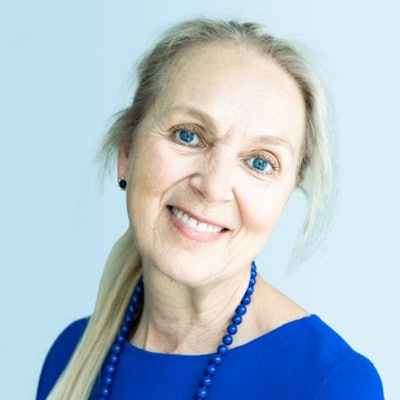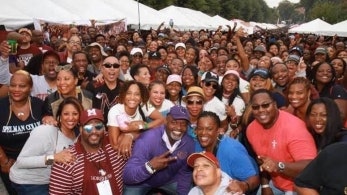HBCUs are currently enjoying their highest levels of cultural prominence in decades. Enrollment is soaring and funding is increasing. And some expect application numbers to improve even further this year as a result of the Supreme Court’s ruling against race-conscious admissions practices. Although HBCUs are more mainstream than ever, a new report from EAB, the educational consulting firm focused on enrollment management, student success, and institutional strategy, shows that the students who seek them out have a distinct profile: they prize a sense of belonging, they have unique communications preferences, and they look at value differently. It’s crucial for historically Black schools to understand these students if the HBCU boom is to be more than a blip.
The report is based on EAB’s 2023 Student Communications Preferences survey, which was taken by over 1,000 students who indicated that they were considering an HBCU. These students’ answers were compared to those of the over 19,000 students who said that they were not considering HBCUs and the nearly 3,000 students who self-identified as Black. Their responses revealed key differences.
Those indicating interest in HBCUs, which the report referred to as “HBCU seekers,” labeled a sense of belonging as one of their top priorities. HBCU seekers were almost two and a half times as likely as those not interested in HBCUs to say that they valued a diverse student body, and almost 50% more likely to say that they wanted to have “students like me on campus.” (They were over 20% more likely to say this than Black students as a group.) More specifically, HBCU seekers were nearly 50% more likely than non-HBCU seekers to prize strong school spirit and traditions, and more than two and a half times more likely to say that they wanted active Greek life.
The finding was unsurprising to Jacory Bernard, an undergraduate recruiter and new student support manager at Morehouse College.
“That’s something that our students communicate,” he said. “They’re looking for a home that will contribute not only to their intellectual development, but their social development. I think it’s comforting for students to know that there is an environment that is tailored to them from its origins.”
 Dr. Pam Royall, head of research, enrollment services at EAB
Dr. Pam Royall, head of research, enrollment services at EAB
“The most important thing is authentic messaging from near-peers,” she said. “If I’m a college sophomore, and I can go to my high school and talk about my experience, [saying] ‘this is a place where I, as a student of color, fit; I’m able to excel; I get the kind of social support I need,’ that messaging is as solid as it gets.”
A crucial place to communicate that sense of belonging is on social media. HBCU seekers were 10% more likely than non-seekers to have interacted with a college on social media and were almost 20% more likely to be open to social media ads from colleges. According to Bernard, social is an important part of Morehouse’s recruiting strategy.
“Social media is a phenomenal opportunity for institutions like Morehouse to really show student life,” he said. “We’re able to show students homecoming celebrations where over 30,000 alumni come back, or hip-hop concerts where we feature guest stars like Travis Scott and Drake, or even our Black Men’s Research Institute, where we’re able to show some of the research findings of students, faculty, and staff.”
Social media may be particularly important given another of the report’s findings: that 60% of HBCU seekers live outside of the southeast, where HBCUs are concentrated. HBCUs are still a draw for these students—they were 30% likelier than those not interested in HBCUs to be willing to travel four hours or more for school. Social media can give these far-off students a taste of what HBCUs campuses look and feel like.
However, HBCU seekers appreciate more traditional forms of contact as well, such as letters and email. The report found that the HBCU-curious were nearly 20% more likely to say that they prefer receiving a personal letter from a college and 12% more likely to say that they prefer getting email.
The latter finding surprised Bernard.
“I thought students would be inundated with emails and they wouldn’t want to receive them,” he said.
Bernard believes that students may prefer them because they feel more personal.
 A Morehouse homecoming
A Morehouse homecoming
Students who are interested in HBCUs also appear to start their college searches earlier. HBCU-seekers were more than 40% likelier to start investigating colleges before high school, and over 25% likelier to have started by the end of their sophomore year. EAB attributed to this to the larger role that family connections, word of mouth, and community events often play in HBCU recruitment. Royall argued that this means that schools should communicate differently.
“The message should be more like a public service announcement,” she said. “It’s not so much a marketing message as it is informational content. The idea is that we want you to find the best fit school for you by making you aware of the diversity of options that’s available.”
Finally, the report found that, although HBCU seekers are concerned with affordability, just like all other students, they perceive value differently. Students open to HBCUs were more likely to say that scholarships and financial aid were top indicators of value, however they were less likely to emphasize a smaller sticker price. This, the report suggests, might mean that HBCU seekers are open to higher list prices if they know that the ultimate price that they pay will be lower.
The EAB report shows that students who are interested in attending HBCUs are a unique group with specific desires and needs. Institutions that are hoping to make the most of the current moment would do well to keep these wants in mind as they craft recruitment strategies going forward.
Jon Edelman can be reached at [email protected]





















